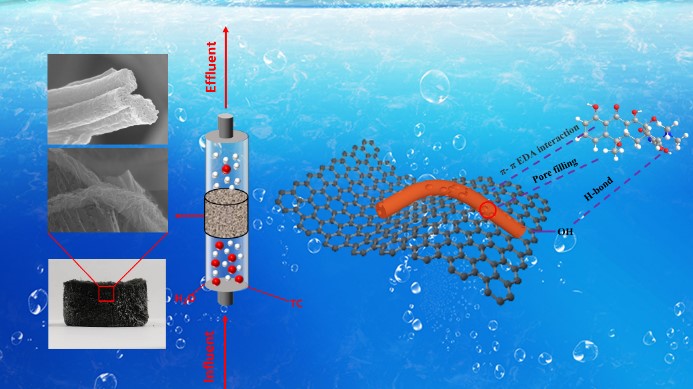

Three-dimensional (3D) adsorption materials have attracted ever-increasing interest as a cost-effective tool to remove antibiotics from water. However, how to effectively enhance the adsorption capacity of the adsorbents is still a great challenge. In this study, a novel method for fabricating 3D porous carbon nanofiber/graphene oxide composite aerogels (PCNF/GOAs) with an adjustable pore structure was developed for antibiotic removal from water using electrospinning-liquid assisted collection technology. By adding poly(methyl methacrylate) (PMMA) as a pore-forming agent, the volume of pores corresponding to the tetracycline (TC) size (0.8–2 nm) increased twelve-fold, and the adsorption capacity increased nine-fold. To evaluate the feasibility of PCNF/GOAs as a potential adsorbent for antibiotic removal, batch and fixed-bed experiments were conducted. The results showed that PCNF/GOAs effectively removed TC from water over a wide pH range (4–10), and the maximum adsorption capacity was more than 900 mg g-1 at pH 7. The experimental data for the adsorption of TC onto PCNF/GOAs better fitted the pseudo-second-order kinetic and Temkin models. Due to its self-supporting characteristic, 3D PCNF/GOAs generated lower inlet pressure compared to traditional particle adsorbents in fixed-bed column adsorption. π–π electro-donor–acceptor (EDA) interaction, pore filling and hydrogen bonding are the main possible mechanisms for the adsorption of TC on PCNF/GOAs.
